Keynote Presentations
ISMB 20th Anniversary Keynote
Presentation Title: Seeing forward by looking back
Room: Grand Ballroom
Sunday, July 15 - 9:00 a.m. - 10:00 a.m.
Richard H. Lathrop (KN1) 
University of California, Irvine
United States
Lawrence Hunter (KN1)
University of Colorado School of Medicine, Denver
United States
Additional Information: Show/Hide
Abstract
The 20 ISMB conferences make intriguing markers for the evolution of our field. From our origins in artificial intelligence (few these days even know that the “IS” in “ISMB” stands for “intelligent systems”) to today’s sprawling conference covering all aspects of computation applied to biology, the people and papers of ISMB can be used to chart the evolution of our field. In this reflection, we will both look back at where we have been, and try extrapolate to where the field may be heading next.
Biography - Richard Lathrop
Ph.D., is a Professor in the Department of Computer Science at the University of California, Irvine. He received an undergraduate degree in mathematics from Reed College, a Ph.D. in Artificial Intelligence from MIT, and also holds graduate degrees in computer science and in electrical engineering from MIT. His post-doctoral work was supervised by Patrick Winston and Temple Smith.
Dr. Lathrop's research interests involve applying intelligent systems and advanced computation to problems and data from molecular biology. He co-founded Arris Pharmaceutical Corp. (now Celera Therapeutics) and Coda Genomics, Inc. (now Verdezyne). His research has appeared on the covers of Communications of the ACM, Journal of Molecular Biology, and AI Magazine. He has received a Best Paper Award from the ACM/IEEE Design Automation Conference, an Innovative Application Award from the AAAI/IAAI Conference, a Best Paper Award from the Genome Informatics Conference, and the Professor of the Year award from the UCI Celebration of Teaching. He is a co-inventor of two US patents. He was a founding officer, and is currently a member of the Board of Directors, of the International Society for Computational Biology.
Biography - Lawrence Hunter
Dr. Lawrence Hunter is the Director of the Computational Bioscience Program and of the Center for Computational Pharmacology at the University of Colorado School of Medicine, and a Professor in the departments of Pharmacology and Computer Science (Boulder). He received his Ph.D. in computer science from Yale University in 1989, and then spent more than 10 years at the National Institutes of Health, ending as the Chief of the Molecular Statistics and Bioinformatics Section at the National Cancer Institute. He inaugurated two of the most important academic bioinformatics conferences, ISMB and PSB, and was the founding President of the International Society for Computational Biology. Dr. Hunter's research interests span a wide range of areas, from cognitive science to rational drug design. His primary focus recently has been the integration of natural language processing, knowledge representation and machine learning techniques and their application to interpreting data generated by high throughput molecular biology.
ISCB Overton Prize Lecture
Ziv Bar-Joseph (KN2)
Lane Center for Computational Biology and Machine Learning Department
Carnegie Mellon University
United States
Presentation Title: Data integration for understanding dynamic biological systems
Room: Grand Ballroom
Sunday, July 15 – 4:30 p.m. – 5:30 p.m.
Additional Information: Show/Hide
Abstract
My first computational biology paper appeared at ISMB in 2001. Back then, we were extremely excited by the news of the first sequencing of a human genome and by the invention of microarrays. A lot has changed since then. We can now sequence individuals in a tiny fraction of the cost and time. In addition, several other technologies have been developed leading to an explosion of quantitative biological data. What has not changed (in fact, what has been greatly reinforced) is the need for computational biology work and for researchers who can analyze and integrate these datasets to improve our understanding the activity of biological systems.
In this talk I will discuss our efforts in this direction focusing on the role machine learning methods can play in combining and comparing high throughput biological data across species and in the integration of static and temporal biological data to reconstruct dynamic networks in the cell. I will also discuss recent work in which we are using computational thinking to perform bi-directional studies; these improve our understanding of biology and simultaneously lead to better algorithms for key computational problems.
Biography
Ziv Bar-Joseph is an Associate Professor in the Lane Center for Computational Biology and the Machine Learning Department at the School of Computer Science at Carnegie Mellon University. His work focuses on the analysis and integration of static and temporal high throughput biological data for systems biology. Based primarily on methods from machine learning, his group develops computational solutions to problems ranging from experimental design to data analysis, pattern recognition and the reconstruction of dynamic biological networks within and across species. More recently he has also worked on improving algorithms for distributed computational networks by relying on our increased understanding of how biological systems operate and what makes them robust and adaptable. Dr. Bar-Joseph has been the co-chair of the RECOMB meeting on Regulatory Networks and Systems Biology in the past two years and he is currently on the editorial board of Bioinformatics. He received his Ph.D. from the Massachusetts Institute of Technology (MIT) and is a recipient of the DIMACS-Celera Genomics Graduate Student Award in Computational Molecular Biology and the NSF CAREER award.
Website: http://www.cs.cmu.edu/~zivbj/
Barbara Wold (KN3)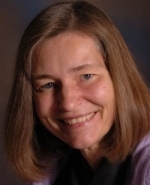
California Institute of Technology, Pasadena
United States
Presentation Title: Analysis of transcriptome structure and chromatin landscapes
Room: Grand Ballroom
Monday, July 16 – 9:00 a.m. – 10:00 a.m.
Additional Information: Show/Hide
Abstract:
mRNA-seq data are now pervasive and contemporary computational tools for analysis have become increasingly sophisticated. Nevertheless, correctly detecting, mapping and quantifying the transcriptome is far from trivial. In particular, the interaction between primary data, known and novel transcript models, and transcript quantification is complex.
Some key consequences and remaining challenges are highlighted. Recent work by the ENCODE consortium is highlighting integrative analysis of diverse genome-wide chromatin data obtained from multiple cell and tissue types. We show that large self organizing maps (SOMs) are effective for chromatin integration, visualization and mining from the end-user biologist's perspective. An ENCODE chromatin SOM illustrates by showing relationships for cell type specific regulatory elements.
Biography
Barbara Wold is the Bren Professor of Molecular Biology and Director of the Beckman Institute at Caltech. In 2011-2012 she will be on leave at the National Cancer Institute to establish its new Cancer Genomics Center. She began working on genome structure and gene regulation during embryo development for her PhD thesis with Eric Davidson, and developed ways to dissect regulatory DNA elements during postdoctoral work at Columbia in Richard Axel’s laboratory. She returned to Caltech to join the Biology faculty in 1981 where she and her students and collaborators study gene and genome function. Recent foci have been developing and then applying new ways to map the inputs and outputs of gene networks in a genomewide manner using “next generation” DNA sequencing (ChIP-Seq, RNA-Seq, single-cell RNA-Seq etc), and applying these methods to gene works that govern mouse and worm myogenesis, T-cell development, and human brain networks.
ISCB Fellows Keynote
 Richard Durbin (KN4)
Richard Durbin (KN4)
Wellcome Trust Sanger Institute
Cambridge, United Kingdom
Presentation Title: Progress, challenges and opportunities in population genome sequencing
Room: Grand Ballroom
Monday, July 16 – 4:30 p.m. – 5:30 p.m.
Additional Information: Show/Hide
Abstract:
The dramatic decrease in DNA sequencing costs in the last few years has direct full genome sequence studies of genetic diversity by sequencing multiple individuals. As well as revealing the full genome sequence of a species including variation within the species, rather than just a representative reference sequence, and hence supporting evolutionary and population genetic studies, this also allows phenotype association studies to be extended to all types of genetic variation, not just common variation typed by genotyping chips. However, there are serious
computational complexities in designing studies and analysing the data. These arise both from the random shotgun nature of current sequencing data combined with the repetitive properties of genomes, and from the complex structure of genetic variation arising from mutation, recombination and inheritance, combined of course with the ever-present requirement for efficiency. I will discuss some of the successes in adressing these issues, and some of the outstanding problems, illustrating with results from the 1000 Genomes Project and population sequencing projects from genetic isolates, where we can begin to build a near-complete picture of genetic variation.
Biography
Richard Durbin is joint Head of Human Genetics at The Wellcome Trust Sanger Institute. He has made multiple theoretical and algorithmic contributions to biological sequence analysis, and contributed to the human genome project and development of the Pfam, TreeFam and WormBase data resources. He is currently co-leading the 1000 Genomes Project to produce a deep catalogue of human genetic variation by large scale sequencing, and the UK10K collaboration to extend sequence based genetics to samples with clinically relevant phenotypes, and has renewed interests in genome assembly methods.
Richard has a BA in Mathematics, and a PhD in Biology from Cambridge University. Following postdoctoral research on neural networks at Stanford University, and 6 years at the MRC Laboratory of Molecular at the start of the C.elegans and human genome projects, he moved to the Sanger Institute where he was Head of Informatics from 1992-2006 and Deputy Director from 1997 to 2006. He was elected a Fellow of the Royal Society in 2004 and of ISCB in 2011.
Website: http://www.sanger.ac.uk/research/faculty/rdurbin
Andrej Sali (KN5) 
University of California, San Francisco
United States
Presentation Title: Integrative Structural Biology
Room: Grand Ballroom
Tuesday, July 17 – 9:00 a.m. – 10:00 a.m.
Additional Information: Show/Hide
Abstract
Department of Bioengineering and Therapeutic Sciences, Department of Pharmaceutical Chemistry, California Institute for Quantitative Biosciences, Mission Bay Byers Hall 508B, 1700 4th Street, University of California, San Francisco, San Francisco, CA 94158-2330, USA
Our broad goal is to contribute to a comprehensive structural characterization of large macromolecular assemblies. Such a characterization is best achieved by hybrid approaches that integrate data from diverse biochemical and biophysical experiments, such as X-ray crystallography, NMR spectroscopy, electron microscopy, immuno-electron microscopy, footprinting, chemical cross-linking, FRET spectroscopy, small angle X-ray scattering, immunoprecipitation, and genetic interactions. Even a coarse structural characterization is often useful to understand how the assembly functions, how it has evolved, and how it could be modulated, in addition to providing a necessary starting point for a higher resolution description.
We formulate the hybrid approach to structure determination as an optimization problem, the solution of which requires three main components: the representation of the assembly, the scoring function, and the optimization method. The ensemble of solutions to the optimization problem embodies the most accurate structural characterization given the available information. The key challenges remain translating experimental data into restraints on the structure of the assembly, combining these spatial restraints into a single scoring function, optimizing the scoring function, and analyzing the resulting ensemble of solutions. Incompleteness and errors in experimental data are treated using inference-based scoring functions that extract the maximum possible information from the data, following a Bayesian approach with minimal assumptions and approximations. Sampling all model structures consistent with the data is often challenging due to the rugged nature of the scoring function landscape and its many local minima; we are developing a multi-scale sampling method that efficiently divides the complete set of degrees of freedom into potentially overlapping subsets, finds optimal and suboptimal solutions for the subsets independently by traditional optimizers or enumeration, and then combines compatible solutions to obtain guaranteed best-scoring solutions for the whole system.
Our methods are implemented in the open source Integrative Modeling Platform (IMP) package (http://salilab.org/imp). IMP is designed to allow mixing and matching of existing modeling components as well as easy adding of new functionality. It supports a wide variety of assembly representations and input data. We also provide infrastructure that encourages and supports contributions from other laboratories.
IMP will be illustrated by its application to the determination of the molecular architectures of the Nuclear Pore Complex, the 26S proteasome, and the Spindle Pole Body.
Russel D, Lasker K, Webb B, Velazquez-Muriel J, Tjioe E, Schneidman-Duhovny D, Peterson B, Sali A. Putting the pieces together: integrative structure determination of macromolecular assemblies. PLoS Biol 10, e1001244, 2012.
Lasker K, Forster F, Bohn S, Walzthoeni T, Villa E, Unverdorben P, Beck F, Aebersold R, Sali A, Baumeister W. Molecular architecture of the 26S proteasome holocomplex determined by an integrative approach. Proc Natl Acad Sci USA 109, 1380-1387, 2012.
F. Alber, F. Förster, D. Korkin, M. Topf, A. Sali. Integrating Diverse Data for Structure Determination of Macromolecular Assemblies. Annual Review of Biochemistry 77, 443-477, 2008.
F. Alber, S. Dokudovskaya, L. Veenhoff, W. Zhang, J. Kipper, D. Devos, A. Suprapto, O. Karni, R. Williams, B.T. Chait, M.P Rout, A. Sali. Determining the architectures of macromolecular assemblies. Nature 450, 683-694, 2007.
Biography
Andrej Sali received his BSc degree in chemistry from the University of Ljubljana, Slovenia, in 1987; and his PhD from Birkbeck College, University of London, UK, in 1991, under the supervision of Professor Tom L. Blundell, where he developed the MODELLER program for comparative modeling of protein structures. He was then a postdoc with Professor Martin Karplus at Harvard University as a Jane Coffin Childs Memorial Fund fellow, studying lattice Monte Carlo models of protein folding. From 1995 to 2002, he was first an Assistant Professor and then an Associate Professor at The Rockefeller University. In 2003, he moved to University of California, San Francisco, as a Professor of Computational Biology in the Department of Bioengineering and Therapeutic Sciences, Department of Pharmaceutical Chemistry, and California Institute for Quantitative Biosciences (QB3). He was a Sinsheimer Scholar (1996), an Alfred P. Sloan Research Fellow (1998), an Irma T. Hirschl Trust Career Scientist (2000), and the recipient of the Zois Award of Science Ambassador of Republic of Slovenia (2007). He is an Editor of Structure and a Founder of Prospect Genomix that merged with Structural Genomix, finally acquired by E. Lilly & Co. Dr. Sali is interested in developing and applying computational methods for determining structures and functions of proteins and their assemblies.
ISCB Senior Scientist Accomplishment Award
Gunnar von Heijne (KN6)
 Photo Max Brouwers
Photo Max Brouwers
Stockholm University
Sweden
Presentation Title: The other Third: Coming to grips with membrane proteins
Room: Grand Ballroom
Tuesday, July 17 – 4:30 p.m. – 5:30 p.m.
Additional Information: Show/Hide
Abstract
Integral membrane proteins account for around 30% of all proteins in most organisms. They are key players (and favored drug targets) in all processes dealing with transport of molecules or ions across cellular membranes, as well as in signal transduction pathways. Yet, our understanding of membrane proteins lags behind that of soluble proteins in almost every respect: biosynthesis, folding, structure, and function. In the past 10 years, however, membrane proteins have progressively moved into the headlines of the molecular life sciences, in a large part thanks to a tight interplay between bioinformatics, computational modeling, and wet-lab work ranging from biophysics to structural biology.
Biography
Gunnar von Heijne worked mainly on problems related to protein sorting and membrane protein biogenesis and structure. The work includes both bioinformatics methods development (e.g. methods for prediction of signal peptides and other sorting signals as well as prediction of membrane protein topology) and experimental studies inE. coliand eukaryotic systems. The most important achievements include the discovery of the so-called (-1,-3)-rule (describes signal peptide cleavage sites) and the positive inside rule (describes membrane protein topology), the development of widely used prediction methods (e.g., TopPred, SignalP, TMHMM), and the first quantitative analysis of the energetics of membrane protein assembly in vivo.
Website: http://www.dbb.su.se/en/?p=researchgroup&id=55
Workshops
Workshop 1: Navigating the granting jungle
Workshop 2: Computational Drug Repositioning and Systems Pharmacology
Workshop 3: Bioinformatics Core Facilities
Workshop 4: Workshop on Education in Bioinformatics (WEB 2012) - The Future in Bioinformatics Training
Workshop 5: P2P - From Postdoc To Principal Investigator
Workshop 6: Bioinformatics for Agriculture and Industrial Biotechnology
Workshop 1: Navigating the granting jungle
Organizers:
Yana Bromberg, Rutgers University, United States
Venkata P. Satagopam, European Molecular Biology Laboratory, Germany
Speaker Slides in PDF format
Date: Sunday, July 15
Time: 10:45 a.m. – 12:40 p.m.
Room: 204
Many different agencies provide funding for research activities. These exist on national levels, but also fund bi-national or international co-operation. This workshop will help current and future principle investigators from the field of bioinformatics and computational biology to get an overview of funding options and information resources available to find such funding sources. In addition, the workshop will help select those funding schemes that are promising as fitted to the individual situation (career stage, collaborators, etc).
While the tutorial focuses on how to write a grant application, the primary aim of the workshop will be to point researchers to the available funding options. The workshop will consist of a panel discussion and 5 invited presentations (10-20 min each with time for questions) on the following topics:
A) Overview of funding options (individual grants, group funding, integrated projects, etc.)
B) Experiences and recommendations from the writer and reviewers’ point of view
C) How to find applicable grants and how to choose which ones to apply for
Programme Time Table
|
Time
|
Topic
|
Speaker
|
|
10:45-11:10
|
Overview of funding opportunities from EMBO, NSF, DOE – session 1
|
Katja Linssen, Julie Dickerson, Susan Gregurick
|
|
11:15-11:40
|
Overview of funding opportunities from EMBO, NSF, DOE – session 2
|
Katja Linssen, Julie Dickerson, Susan Gregurick
|
|
11:45-12:10
|
Grant writer and reviewer perspectives
|
Russ Altman, Stanford U
Sean Mooney, Buck Institute
|
|
12:10-12:20 |
BIGDATA Program at NSF |
Tandy Warnow, Program Director CISE/IIS - download ppt |
|
12:10-12:40
|
Round Table discussion
|
All Participants
|
Workshop 2: Computational Drug Repositioning and Systems Pharmacology
Organizers:
Michael Schroeder, TU Dresden, Germany
Phil Bourne, University of California, San Diego, United States
Jacob Koehler, Dow Agro-Science, United States
Date: Sunday, July 15
Time: 2:30 p.m. – 4:25 p.m.
Room: 204
The long standing and problematic notion of designing one drug to specifically act against one target to treat one disease is slowly giving way to a more systematic systems-based approach broadly defined as systems pharmacology. In a computational sense it is where computational chemistry, bioinformatics, chemoinformatics and systems biology meet. Computational systems pharmacology is translational in that it embraces data from genotype through to electronic health records on patient cohorts. The goal of this workshop is to review the latest developments leading to new lead compounds and biomarkers, repositioning of existing approved drugs, and the use of multiple drug therapies. Together with invited leaders in the emergent field of systems pharmacology the workshop will define a course for the future, which we hope to publish as a Perspective in PLoS Computational Biology.
Part A. Drug interactions as markers for repurposing opportunities (2:30 p.m. - 2:55 p.m.)
Speaker: Russ B Altman, Stanford University
We have created methods for looking for drug interactions at the molecular and cellular level, as well as through logical analysis of the literature, and data mining of population-based health records. Each of these data sources individually is powerful but biased. When combined, they may yield more robust hypotheses about how drugs may combine to create unexpected response phenotypes, useful for repurposing. We have used molecular methods to propose repurposing for kinases, cellular methods for potentially repurposing parthenolide, and have found synergistic interactions between existing drugs that create responses not associated with either drug alone.
Part B. Can Computational Biology Deliver Systematic Drug Repositioning? (3:00 p.m. - 3:25 p.m.)
Speaker: Pankaj Agarwal, GlaxoSmithKline R&D
Proving that a drug that has seen human patients also works in another indication adds clear value for patients. The question for computational biology is can these predictions be made systematically with precision. We will discuss two recent methods that add to this debate. The first one uses genetics associations (from Genome Wide Association Studies – GWAS) to find new indications for drugs some of which are being validated experimentally. The second one frames the side effects of drugs as pharmacological effects, relies on the observation that many drugs that treat a disease have similar side effects, and then predicts other drugs with similar side effects as potential treatments for the disease.
Part C. Rescuing targeted compounds with combination therapy and protein interactions models (3:30 p.m. - 3:55 p.m.)
Speaker: Yves Lussier, University of Chicago
We hypothesized that unbiased protein interaction network models can unveil non-canonical mechanism of targeted therapy resistance . We identified a FDA approved drug that may sensitize resistant cancer cells by inhibiting the bioinformatically-identified aberrant molecular signals sustaining EGFR pathway activity. This network-targeting therapy, later validated in vitro/in vivo, spawned the development of our NIH Phase II clinical trial. These approaches are scalable to unveil novel interactions with canonical pathways and may apply to identifying novel targets in addition to drug rescue.
Part D. Computational Drup Repositioning and Systems Pharmacology (4:00 p.m. - 4:25 p.m.)
Speakers: Michael Schroeder, TU Dresden, Germany
Phil Bourne, University of California San Diego
Jacob Koehler, Dow AgroSciences
The long standing and problematic notion of designing one drug to specifically act against one target to treat one disease is slowly giving
way to a more systematic systems-based approach broadly defined as systems pharmacology. In a computational sense it is where computational chemistry, bioinformatics, chemoinformatics and systems biology meet. Computational systems pharmacology is translational in that it embraces data from genotype through to electronic health records on patient cohorts. Here, we briefly summarise our experiences and discuss the latest developments leading to new lead compounds and biomarkers, repositioning of existing approved drugs, the use of multiple drug therapies.
Workshop 3: Bioinformatics Core Facilities
Organizers:
Simon Andrews -The Babraham Institute
Fran Lewitter - Whitehead Institute for Biomedical Research
Brent Richter - Partners Healthcare
David Sexton - Baylor College of Medicine
Date: Monday, July 16
Time: 10:45 a.m. – 12:40 p.m.
Room: 204
Topic 1: Extracting biological information from diverse data sources
(Talks: 25 minutes, 5 minute break; Open Forum Discussion: 25 minutes, 5 minute break)
Scientists have typically thought of experiments in terms of using a single technology to answer a question. Technologies such as genome wide analyses have generally been performed using a single type of analysis (sequencing, microarray, mass-spec etc). However we are seeing that a complete biological picture of an experimental system can only really be gained by integrating together multiple diverse data types. Increasingly, research departments and projects are beginning to find their sequencing data limits their findings (gene associations are noisy in that the genes identified, once examined closely, usually point to other up/down stream factors) and begin to turn to data and analysis in the domains of network and systems biology. In some fields (eg epigenetics) the need for this type of integration of methylation, histone modification, nucleosome positioning, mass spec and RNA-seq is already present, but the same principle applies to most biological systems. In this session we will aim to look at the practicalities of this type of integration, including success stories, pitfalls and failures and some discussion about the tools available to help.
Part A: "Opportunities & Challenges with Integrating Large-Scale –‘Omics Data."
Speaker: Stephen Turner Bioinformatics Core Director, University of Virginia
This talk will show how to integrate diverse ‘Omics data to provide a fuller picture of biological function and significance of discovered variation.
Part B: "Challenges of integrating and analyzing different genomic data types"
James Cavalcoli (Director, CCDU Bioinformatics Core, University of Michigan)
This talk will focus on the tools available for data integration and how they can be used to provide the scientist with filters to narrow the data space in which they have to search.
Part C: Discussion: Extracting biological information from diverse data sources (11:15 a.m. - 11:40 a.m.)
To be moderated by Jim Cavalcoli, Director, CCDU Bioinformatics Core, University of Michigan and Fran Lewitter, Director of Bioinformatics and Research Computing, Whitehead Institute for Biomedical Research.
Topic 2: Handling the increase of demand and requirements from different sets of users within a core (11:45 a.m. - 12:10 p.m.)
(Talks: 25 minutes, 5 minute break; Open Forum Discussion: 25 minutes, 5 minute break)
Many core facilities deal with diverse sets of users who come with very different needs. Balancing the needs of these different sets of users is a challenging task, which can be compounded by financial, regulatory or political pressures. Common headaches might include the special requirements of users working with clinical samples or for pipelines "translating" from research use to production or even clinical sequencing service. Pressure to transition and concerns of traceability, tracking, and privacy must be addressed. Additionally, external or commercial samples might come with service level agreements, which dictate the level, speed or quality of service required.
Keeping everyone happy in these situations is a potential minefield for a core, so in this session we will hear how some existing facilities have coped with these pressures, and what challenges remain. We will discuss in more detail some of the specific problems, which come with clinical applications since these present an immediate challenge affecting many of the groups.
Part D: Running a Bioinformatics Help Desk: from drawing colorful plasmid maps to working with HiSeq Data
Hans-Rudolf, Friedrich Miescher Institute for Biomedical Research, Switzerland
This talk will focus on the diverse population of investigators who use core services and the difficulty of satisfying all of the competing interests of those users.
Part E: The Challenges of Dealing with Medical Data Reinhard Schneider, University of Luxembourg, Luxembourg
This talk will investigate the increased use of medical sequencing and the challenges this can present to an academic bioinformatics core. There are many regulatory and privacy hurdles that must be navigated by cores, which are not used to satisfying these requirements.
Part F: Discussion: Handling the increase of demand and requirements from different sets of users within a core (12:15 p.m. - 12:40 p.m.)
To be moderated by Brent Richter, Partners Healthcare and David Sexton, Baylor College of Medicine, Human Genome Sequencing Center.
Workshop 4: Workshop on Education in Bioinformatics (WEB 2012) - The Future in Bioinformatics Training
Organizers:
Michelle Brazas, Ontario Institute for Cancer Research, Canada
Fran Lewitter, Whitehead Institute for Biomedical Research
Vicky Schneider, EMBL-EBI
Date: Monday, July 16
Time: 2:30 p.m. – 4:25 p.m.
Room: 204
The focus of many bioinformatics training programs is on the translation of the bioinformatics tools and skills needed by their research audience. In parallel, bioinformatics training programs must also keep pace with the advances in technology that support their training efforts, such as computing in the Cloud and web-based learning platforms. There is an even greater need now to keep abreast of such technologies, since many of the newer high-throughput research methods produce such large volumes of data that trying to cover a realistic scenario of data retrieval, handling and manipulation in a classroom environment depends upon enormous computational power to store and handle such data (e.g. NGS course where read alignment involves storage and manipulation of file sizes of 1TB from a single flow cell experiment).
This workshop will consist of presentations on 1) how computing in the Cloud can alleviate the stress of insufficient computational infrastructure, make computationally intensive training programs feasible and be used to further participant skills; 2) how repositories of established, updated tutorials can promote self-directed bioinformatics training and complement onsite training programs; and 3) how the development of e-learning bioinformatics resources and the demand for self-directed learning is changing the focus of face-to-face bioinformatics training programs.
Part A: Bioinformatics training in the clouds (2:30 p.m. - 2:55 p.m.)
Speaker: Francis Ouellette, Canadian Bioinformatics Workshops, Canada
Francis Ouellette will speak on how the Cloud is being used to help run the Informatics for High-throughout Sequencing workshops offered by the Canadian Bioinformatics Workshops.
Part B: Bioinformatics education outside of a different box (3:00 p.m. - 3:25 p.m.)
Speaker: Trey Lathe, OpenHelix, United States
Trey Lathe will speak on how a self-directed model of bioinformatics training is pushing demand for a repository of high quality, tool specific tutorials.
Part C: Train online: reflections on the early days (3:30 p.m. - 3:55 p.m.)
Speaker: Cath Brooksbank, EMBL-EBI United Kingdom
Cath Brooksbank will speak on how demand for self-directed web based learning resources in bioinformatics is fueling the development of e-learning bioinformatics resources and changing the focus of face-to-face bioinformatics training programs.
Part D: Panel Discussion: Workshop on Education in Bioinformatics (4:00 p.m. - 4:25 p.m.)
Speaker: Michelle Brazas, Ontario Institute for Cancer Research, Canada
Invited presentations will be followed by a panel discussion (moderated by Michelle Brazas) with the objective to project how new technologies can be incorporated into current bioinformatics training programs and how new technologies are changing the landscape of bioinformatics training.
Fran Lewitter, Ph.D. is the Director of Bioinformatics and Research Computing at Whitehead Institute for Biomedical Research. Her group develops materials and provides training to biologists in the Institute. In addition, Fran is a member of the ISCB board of directors and the chair of the Education committee. She is also the Education Editor for PLoS Computational Biology.
Michelle Brazas, PhD is the Coordinator of the Canadian Bioinformatics Workshops (bioinformatics.ca) and Manager of Bioinformatics Education at the Ontario Institute for Cancer Research. She also teaches bioinformatics in Nigeria as part of her outreach programs.
Vicky Schneider is the User Training Coordinator at the EMBL-EBI. She is responsible for the coordination and implementation of the EMBL-EBI’s User-Training programme (www.ebi.ac.uk/training/), which provides training for the scientific users of the EMBL-EBI’s data services.
Workshop 5: P2P - From Postdoc To Principal Investigator
Speakers
Gary Bader, University of Toronto
Philip E. Bourne, University of California San Diego
Florian Markowetz, Cancer Research UK
Organizers
Nils Gehlenborg, Harvard Medical School
Thomas Abeel, Broad Institute of MIT and Harvard
Magali Michaut, The Netherlands Cancer Institute
Venkata P. Satagopam, European Molecular Biology Laboratory
Jeroen de Ridder, Delft University of Technology
Date: Tuesday, July 17
Time: 10:45 a.m. – 12:40 p.m.
Room: 204
Establishing an independent research group is an important milestone in the professional life of many scientists. This is a challenging endeavor that requires careful planning and preparation. Many questions will arise at different stages of this process: about the application, attending interviews, deciding which one is the best position to accept if one has several offers, and about negotiating the best possible deal before signing a contract. This will be followed by another phase of completely different challenges that relate to setting up a lab, such as the hiring and supervision of trainees and staff.
This workshop will address the most relevant of these challenges that many postdocs and newly appointed principal investigators (PI) are facing. Three experienced PIs will provide insight into the transition from trainee to PI and share advice on how to make the best out it. The workshop will be useful for scientists at all stages of the process and prepare them for this crucial phase of their career.
Part A: Applying (10:45 a.m. - 11:10 a.m.)
Speaker: Florian Markowetz Group Leader, Cambridge Research Institute, Cancer Research UK
So you have a PhD and have been a post-doc for a while or you are close to finishing up your PhD and you start wondering: “What’s next”? Do you want to stay in academia or are there any other options available? If you want to stay in academia, is it required to do a post-doc or can you move straight to the a more independent position of a PI? After careful deliberation you decide you want to work as a PI. Now what?
A number of things need to be sorted out. First of all, you need to define the position within the scientific world you want to occupy. Then you need to let your peers know what your place is and why they should care. It is important to figure out what you want to accomplish in the next 5 years and what your long-term goals are.
You are now your own ‘product’, time to start selling. First stop: prospective customers, also known as universities and institutes that may be interested in your services. Which institutes are relevant to your expertise? Do they have interesting jobs? Well, what are you waiting for?
Part B: Interviewing, Deciding and Negotiating (11:15 a.m. - 11:40 a.m.)
Gary Bader Associate Professor, The Donnelly Centre, University of Toronto
Now that you’ve landed an interview or two or ten it is time to figure out what it really means to interview for a faculty job. What is the difference between the job talk and the chalk talk? Who should you talk to and what are the crucial questions that you should ask about? Do you need to know what each and every faculty member is working on? What is it that the search committee is looking for in you? What qualities should you highlight and emphasize? Should you prepare differently for different kinds of departments (CS vs biology vs med school)?
No worries - you’ll get an offer. But not only one, you’ll get five! So it’s time for negotiations and you start wondering how you make sure that you get yourself a good start up package. What are you worth? How do you negotiate your own salary and can you get money for an administrator? What about travel funding or money to cover publication costs? And besides the money, what other criteria should you take into account before accepting an offer? Is money more important that for instance an opportunity to establish a group of local collaborators and access to excellent shared facilities? It is better to have little to no teaching commitments instead of access to outstanding students? What role should the tenure criteria play in your decision?
Session 3: Hiring and Supervising (11:45 a.m. - 12:10 p.m.)
Speaker: Philip E. Bourne Professor, Skaggs School of Pharmacy and Pharmaceutical Sciences, University of California San Diego
Congratulations! You made it into a junior PI position, and you even got some money to employ one or two students. Of course, you intend to find and hire the smartest and most hard-working students in the universe to carry out your brilliant ideas. Yet, you have no experience differentiating between the suitable and unsuitable candidates. And to be honest, you do not even exactly know what ‘suitable’ means. How to determine the criteria for the perfect candidate, what are appropriate questions to ask? Do you hire someone with a lot of experience, or someone that is a fast learner?
You found someone! It was (scientific) love at first sight! There is just one catch: how to supervise this person? Surely, the new PhD student/post-doc is bright, but how to motivate him/her after a set-back or entice him/her to become more creative? It turns out to be much harder than you though to stimulate a potentially brilliant student/post-doc to actually produce brilliant work.
Part D: Panel discussion (12:15 p.m. - 12:40 p.m.)
All speakers
Of course, every experience is unique and there is no general rule. The panel discussion will give the opportunity to hear about different opinions and stories on all the topics discussed in the workshop and beyond. All speakers will be present and have ample time to discuss additional questions raised by the audience. It’s your chance to get your questions answered!
Workshop 6: Bioinformatics for Agriculture and Industrial Biotechnology
Organizers:
Chris Rawlings, Rothamsted Research, United Kingdom
Jacob Koehler, Dow Agro-science, Bioinformatics, United States
Date: Tuesday, July 17
Time: 2:30 p.m. – 4:25 p.m.
Room: 204
Abstract:
The aim of this workshop is to help build an ISMB community for those working on data from the genomes of species relevant to food security, energy security and industrial biotechnology. Increasing our food and energy security through sustainable agriculture and the exploitation of biotechnology are global challenges. These challenges are rising up the political and economic agenda in many countries and there are many calls for increased investment in agricultural research. The genomics revolution is only now starting to have a real impact in agricultural research and we believe that a growing and vibrant Bioinformatics community will be essential to the delivery of improved crop varieties, crop protection technologies and new biotechnological processes
Many centres (even large research organisations) working in this area have small bioinformatics groups with limited resources and we believe that an opportunity to bring people together to share experience and also to increase awareness of the interesting challenges that we face would be a good fit with the aims of ISMB meetings. Bioinformaticians working in these areas of applied science, however, face many challenges not shared by colleagues working on the usual model or medically-relevant species (e.g. yeast, human, mouse, drosophila etc). These challenges arise from fragmentation of the data landscape caused by the many boutique data resources, the incompleteness of genome information for many of the species we work on, the paucity of good reference model organisms with extensive functional genomics information and also the complexity of genome organisation in many crop species (e.g. polyploidy).
Part A: Harnessing Diversity – the bioinformatics challenges in Agro-ecosystems research for sustainable food production (2:30 p.m. - 2:55 p.m.)
Speakers: Chris Rawlings, Rothamsted Research, United Kingdom
Research and Development in agriculture depends on the cultivation, and improvement by selective breeding and genetic manipulation of plant, microbial and animal species for which the level of genomic information is severely limited by comparison with that available for the key model organisms in their respective biological kingdoms. Furthermore, much of the information about biological function for our and other data is dispersed and fragmented in database and as web resources that have generally been developed with limited support for cross comparison and genome scale analysis. This creates problems for bioinformaticians tasked with integrating diverse datasets for interpretation and annotation of data coming from the new high throughput and high content methods for characterising gene function, phenotype and of course next generation sequencing. In addition, the application of next generation sequencing methods to studying population and ecosystem diversity (e.g. metagenomics) is broadening the range of problems that can now be tackled using molecular approaches. The lack of reference genomes, fragmentation of functional data and huge increase in data volumes pose huge challenges for all bioinformaticians. Some tools and resources are emerging that help us deal with these problems, but knowledge of the best approaches is not widely shared and this (probably) leads to many wheels being re-invented in groups with generally limited resources. In this session, I will review the nature of these challenges and argue that building a more cohesive community of bioinformaticians working in agriculture and industrial biotechnology would benefit our community and ultimately the challenges of feeding and fuelling the planet by more sustainable approaches.
Part B: Analysis of Microbes, Microbial Communities, and Plants using the DOE Knowledgebase (3:00 p.m. - 3:25 p.m.)
Christopher Henry , Argonne National Laboratory, USA
The Systems Biology Knowledgebase (KBase) has two central goals. The scientific goal is to produce predictive models, reference datasets and analytical tools and demonstrate their utility in biological research relating to bioenergy, carbon cycle, and the study of subsurface microbial communities. The operational goal is to create the integrated software and hardware infrastructure needed to support the creation, maintenance and use of predictive models and methods in the study of microbes, microbial communities and plants. The microbial component of the KBase will be centered around an analysis pipeline that will include annotation of genome sequences, reconstruction of metabolic pathways and regulons, generation of metabolic and regulatory models, and reconciliation of models with existing ‘omics datasets and new datasets uploaded by a user. KBase will provide access to this database and analysis pipeline via a powerful programmatic interface and an intuitive socially-enabled web interface. The plant component of the KBase will allow users to model genotype-to-phenotype relationships using metabolic and functional networks as well as phenotype measurements and various omics data. Plant Kbase will also support the reconstruction of new metabolic and functional networks. To accomplish this goal, KBase will provide interactive, data-driven analysis and exploration across multiple experiments and diverse
Part C: Integrating and Interpreting Genomic Data: An “exploding” challenge for model and non-model organisms (3:30 p.m. - 3:55 p.m.)
Speaker: Timothy Swaller, Director of Information Technology and Genomics, Ceres, Inc. , United States
The rapid explosion of both internally and externally developed experimental data of model and non-model organisms alike is causing a bottleneck on how best to use and integrate this data with already available public and private information resources. The size and complexity of these genomes in combination with the uptake of next-generation sequencing technologies is causing a significant challenge in the management, translation and use of this data. In addition, there continues to be an increase in innovative analytics which further complicates interpretation of results. These current and growing obstacles cause researchers to struggle with the best way to utilize these new information resources. Researchers and institutions routinely need to decide whether to allocate resources to the analysis of externally or internally developed data to ensure the best datasets are available for research efforts. Due to interpretation challenges with external data, internal data is routinely prioritized leading to a growing set of external data and results that never fully realize its potential. This scenario can be much improved if researchers could easily pull together different datasets and obtain integrated views that combine internal and external data. To this end, Ceres has developed software which allows integration of large, complex genomic datasets and results. The software allows researchers to visualize, compare and explore through experiments and data in a dynamic and responsive fashion. Information is used and maintained, no longer cast aside to focus on the next new experiment. This allows researchers to efficiently use their time and also to effectively consume data by continually building upon established datasets, producing better integrated and validated decisions.
Part D: The role of Bioinformatics in applied Agriculture and Industrial Biotechnology (4:00 p.m. - 4:25 p.m.)
Speaker: Jacob Koehler, Global Leader Bioinformatics, Dow Agrosciences, USA
Biotechnology has a broad range of Industrial applications. The majority of public and commercial Bioinformatics resources are human centric, i.e. they are primarily applicable to Pharma and Medicine related applications. In this session, we will review non-human Biotech applications, such as agriculture and food production, bio-processing, fermentation, bioremediation and waste treatment. These applications cannot be addressed by specializing on a small number of model organisms. For Bioinformaticians working in these areas, the majority of the public and commercial resources are of limited use. In spite of the diversity of these approaches, there are commonalities between these different Biotech applications. We will discuss these commonalities in order to identify common Bioinformatics tasks and activities. This will lead to the discussion of tools and resources that can be leveraged across the different applications. Further, we will also discuss the importance of a diverse range of unique resources and methods, that are highly specialized towards specific applications.
top
Special Sessions
ISMB 2012 features Special Session presentations throughout the conference July 15 - July 17. Special Sessions have the purpose of introducing the scientific community to relevant scientific issues and topics that are typically not within the focus of the conference. Preliminary program information on Special Sessions is noted below.
(Schedules subject to change)
Special Session 1: Biological Complexity through Model Organisms - CANCELLED
Special Session 2: Modeling Infectious Disease Processes
Special Session 3: The NIH National Centers for Biomedical Computing (NCBC)
Special Session 4: Bioinformatic Integration of Diverse Experimental Data Sources
Special Session 5: Celebrating Science Together: ISMB 20 Years and NIGMS 50th anniversary special session
Special Session 6: Computational methods for elucidating nuclear structure and dynamics
Special Session 7: Harnessing community intelligence for bioinformatics
Special Session 1: Biological Complexity through Model Organisms ---
CANCELLED
Special Session 2: Modeling Infectious Disease Processes
Organizer(s):
Jason McDermott, Pacific Northwest National Laboratory, Richland, United States
Katrina Waters, Pacific Northwest National Laboratory, Richland, United States
Date: Sunday, July 15
Start Time: 2:30 p.m. – End Time: 4:25 p.m.
Room: 202B/C
Infectious disease is one of the most formidable problems being faced in the world today. Recent emergence of new pathogens, antibiotic resistant strains of existing pathogens, and re-emergence of diseases thought to be eliminated have pointed out the importance of research to understand infectious diseases. The threat of pandemic from a novel strain of influenza or other viruses is ever present. Understanding the mechanisms of pathogenesis and the complex interplay between host and pathogen is extremely important but in large part has eluded scientific investigation. Pathogens have smaller genomes than their hosts, are present in far larger numbers than their hosts and evolve much more rapidly. Host defense systems are sophisticated and they have the ability to respond to a wide variety of pathogens. The interaction between host and pathogen is complex and involves many iterative responses on both sides in a struggle for survival. New insights into host-pathogen interactions will allow development of novel therapeutic strategies to combat disease.
The development of high-throughput data acquisition methods has prompted an explosion of systems-level data on host-pathogen systems that requires sophisticated and multi-faceted computational modeling approaches to interpret. There is a vast amount of knowledge about pathogens, hosts and their interactions in the form of scientific literature and a myriad of databases. Organization and interpretation of this information can allow a broader understanding of infectious disease processes. The interaction between host and pathogen is nuanced and complicated. Understanding these interactions requires systems biology approaches that aim to elucidate the relationships between components in the system and how these relationships give rise to higher order phenotypes such as pathogenesis.
Addressing these complicated issues requires sophisticated computational modeling approaches that involve statistical and mathematical models, high-throughput data analysis, integration of diverse forms of data, and working closely with the bench biologists, clinicians and epidemiologists who are investigating infectious disease. The community represented at ISMB is perfectly positioned to confront these problems. Our proposed session would highlight key approaches taken by leading investigators to answer crucial questions related to infectious diseases. It would serve to spur discussion in the computational biology community about this important problem.
Part A: Host Response Networks Against Influenza Infections: Virus Attack and Host Defense (2:30 p.m. - 2:55 p.m.)
Speaker Christian Forst, UT Southwestern Medical
Pathogens and host engage in an endless battle trying to out-compete each other. Pathogens (viruses in our case) attempt to hijack host processes for their advantage and for replication, whereas the host tries to defend against such attacks. We have employed two classes of whole-genome siRNA screens to identify (i) host and resistance factors for viral replication, as well as (ii) processes for host cell-survival and death. Together with biochemical network information we were able to identify distinct cellular factors and processes with respect to four distinct phenotypes: (i) resistance factors required for cell survival, (ii) restriction factors inducing cell death, (iii) host factors required for infection, and (iv) host factors that specify death in response to infection. Thus, we are not only able to pin-point processes of the viral life cycle, but also to identify host-defense pathways with diagnostic and therapeutic potential.
Part B: Reconstructing the Regulatory Network of TB: Deconstruction of the Hypoxic Response (3:00 p.m. - 3:25 p.m.)
Speaker: Elham Azizi, Boston University, United States
We have generated the first genome scale model of the in M. tuberculosis regulatory network and combined this network with the first comprehensive profiling of mRNA, proteins, metabolites and lipids in MTB during hypoxia and re-aeration. We have developed a high-throughput system based on ChIP-Seq for comprehensively mapping regulatory binding, and integrated this with expression data from the induction of the same factors. Our method allows us to map DNA binding of all MTB regulators in a consistent and comparable manner independent of regulatory function. Using this method we have reconstructed a regulatory network model based on over 50 transcriptions factors. The network doubles the number of regulators whose interactions have been studied in MTB, discovers thousands of interactions and assigns functions to a substantial number, suggests many more potentially functional interactions for even well-studied regulators, and displays predictive power for gene expression.
The network model also reveals a direct and interconnection between the hypoxic response, lipid catabolism, lipid anabolism and the production of known immunomodulatory lipids, and protein degradation. Consistent with this, we observe substantial alterations in lipid, amino acid, and protein content in response to oxygen availability. The regulator network provides insight into the transcription factors underlying these changes. Using our regulatory network data – generated under independent normoxic conditions - we are able to generate models of steady state gene expression that allow us to predict MTB gene expression during hypoxia and re-aeration.
Part C: Informatics-Enabled Microbe-Host-Environment Interactions (3:30 p.m. - 3:55 p.m.)
Speaker: Bruno Sobral, Virginia Bioinformatics Institute, United States
Part D: Systems Biology of Infectious Disease (4:00 p.m. - 4:25 p.m.)
Speakers: Jason McDermott, Pacific Northwest National Laboratory United States
Katrina Waters, Pacific Northwest National Laboratory United States
The study of infectious disease and the complex interplay between pathogens and their hosts has benefitted greatly from the ability to generate many different high-throughput measurements of systems, including transcriptomics, proteomics, and metabolomics. Ways to represent, interpret, and model such multimodal datasets allow improved understanding of the host-pathogen relationship at a systems biology level. We present recent results from systems biology studies of bacterial enteropathogens, Salmonella Typhimurium and Yersinia pestis, as well as respiratory viruses, influenza H5N1 and SARS coronavirus, interacting with their hosts. We will describe the use of network-based approaches to interpretation of high-throughput data and prediction of important components of the system, including experimental validation of some of these predictions. We will also describe how predictive modeling approaches can be used to model important aspects of the interaction and provide predictions of control points for pathogenesis and host response. Finally, we will discuss critical gaps that exist in the systems biology study of infectious diseases and future directions to address those gaps.
TOP
Special Session 3: The NIH National Centers for Biomedical Computing (NCBC)
Organizer(s):
Peter M. Lyster, National Institutes of Health, Bethesda, United States
Jen Villani, National Institutes of Health, Bethesda, United States
Date: Monday, July 16
Start Time: 10:45 a.m. – End Time: 12:40 p.m.
Room: 104C
The National Centers for Biomedical Computing (NCBC) are cooperative agreement awards that are funded under the NIH Common Fund. The Special Session will highlight the computational scientific achievements of the NCBCs program as well as provide a full palette of software and resources that can be obtained from the individual Centers as accessed through the main portal http://www.ncbcs.org/ There are eight funded Centers that cover biophysical modeling, biomedical ontologies, information integration, tools for gene-phenotype and disease analysis, systems biology, image analysis, and health information modeling and analysis. The centers will create innovative software programs and other tools that enable the biomedical community to integrate, analyze, model, simulate, and share data on human health and disease. Each Center has Cores that are focused on (i) biomedical computational science and (ii) driving biological projects (DBPs) whose intent is to drive the interaction between computational and biomedical computational science. There are numerous efforts in education and training that emanate from the Centers and there is an annual all hands meeting. In addition to the Centers, the NIH and other government agencies have a number of funding announcements that are summarized in the Biomedical Information Science and Technology Initiative (BISTI) Funding Page
http://www.bisti.nih.gov/funding/index.asp. The funding page summarizes all initiatives across Government that have a significant component of biomedical computing. This also includes a program for Collaborations with National Centers for Biomedical Computing. The Special Session at ISMB will include three talks from our PIs and a panel that combines representatives from all eight NCBCs and NIH representatives from the Project Team.
Part A: Biomedical Imaging under the NCBC Program (10:45 a.m. - 11:10 a.m.)
Speakers: Ron Kikinis Brigham and Women's Hospital
A number of the NCBC centers focus on biomedical imaging. In particular, the National Alliance for Medical Image Computing (NA-MIC) researches computational tools for the analysis and visualization of medical image data, the Center for Computational Biology (CCB) is focused on the development of computational biological atlases of different populations, subjects, modalities, and spatio-temporal scales. Several of the other centers have imaging related aims, including IDASH and Simbios Centers.
Part B: Computational Biology and Systems Science under the NCBC Program (11:15 a.m. - 11:40 a.m)
Russ Altman Stanford University, United States
Part C: Biomedical Informatics under the NCBC Program (11:45 a.m. - 12:10 p.m.)
Speaker: Mark Musen Stanford University, United States
Three of the National Centers for Biomedical Computing concentrate on infrastructure to support the management of biomedical data sets. Informatics for Integrating Biology and the Bedside (i2b2) offers support for warehousing clinical and biomedical data to assist clinical and translational research. Integrating Data for Analysis, Anonymization and Sharing (iDASH) concentrates on methods to enable the secure distribution and analysis of private health information. The National Center for Biomedical Ontology (NCBO) maintains a repository of more than 300 biomedical ontologies and offers services that enable the use of those ontologies for data analytics and biomedical research. We will discuss the Centers' technology and case studies of how that technology has been used to support work in biomedical informatics.
Part D: Panel for NCBCs: (12:15 p.m. - 12:40 p.m.)
Isaac Kohane Brigham and Women's Hospital, Ron Kikinis Brigham and Women's Hospital, Andrea Califano Columbia University, Brian Athey University of Michigan, Mark Musen Stanford University, Russ Altman Stanford University, Arthur Toga University of California at Los Angeles, Lucila Ohno-Machado University of California at San Diego, and members of NIH Project Team
TOP
Special Session 4: Bioinformatic Integration of Diverse Experimental Data Sources
Organizer(s):
Kyle Ellrott, University of California Santa Cruz, United States
David Haussler, University of California Santa Cruz, United States
Artem Sokolov, University of California Santa Cruz, United States
Josh Stuart, University of California Santa Cruz, United States
Date: Monday, July 16
Start Time: 2:30 p.m. – End Time: 4:25 p.m.
Room: 201A
Modern genomics has seen the advent of different technologies for high-throughput biological analysis. Technologies for RNA sequencing, methylation analysis, expression arrays, whole genome sequencing, pathway analysis, proteomics and protein structure analysis can all produce a variety of data that can help understand biological systems. Frequently, data from different types of high throughput experiments are treated as separate silos, with researchers spending most of their time inspecting a single type of data and only occasionally tapping another data source for validation. However, by integrating diverse sources of data, relevant information not detectable from a single source may become more pronounced and visible.
We propose to organize a special session that will address the current successes and challenges in the development and application of integrative approaches to understanding biological systems and translating results to clinical insights. Our panel of experts will present some of the current cutting-edge ideas in this area.
Part A: New Opportunities and Challenges in Network Biology (2:30 p.m. - 2:55 p.m.)
Speaker: Trey Ideker, UCSD School of Medicine, La Jolla, United States
Seminal contributions to the integration of molecular interactions and phenotypes, investigating host-pathogen interactions, inferring systems evolution through network-network alignment, and uncovering key mechanisms through dynamic network analysis.
The past decade has seen an explosion in “genome-era” technologies which profile genes, proteins, metabolites and the intricate web of interconnections among them. Much of bioinformatics and functional genomics is now focused on methods to assemble these diverse measurements into models of functional networks and pathways within the cell. As important, these pathway maps will provide essential information as doctors struggle to interpret the flood of genetic and clinical data that can now be collected for a patient.
We are working in several areas that we believe will be critical for assembling network models and for using them in a clinical setting:
1. Mapping the genetic network underlying the response to DNA damage. Failure of cells to respond to DNA damage is a primary step in the onset of cancer and is a key mechanism of environmental toxicity. Consequently, cells have evolved complex repair and stress responses that are highly conserved across the eukaryotic kingdom, from yeast to humans. We will describe our ongoing efforts to apply ChIP-sequencing and synthetic-lethal screens to map how the cell's transcriptional network is remodeled by DNA-damaging conditions.
2. Network-based biomarkers for disease diagnosis and personalized medicine. Genetic biomarkers are typically thought of as individual genes and proteins¡ª for example using prostate specific antigen (PSA) as a marker for prostate cancer. Recently, we have shown that networks can also serve as powerful biomarkers and in many cases are more predictive than any individual gene. Our approach is to project gene and/or protein expression profiles of each patient onto the known human genetic network map to identify pathways that are predictive of disease. This “network-based” biomarker approach has shown improved accuracy in diagnosis of breast and lung cancer as well as NF-kB activation state.
3. Protein network comparative genomics. We are developing a library of standard approaches for comparing protein interaction networks across species, conditions, and network types. We will describe network comparisons to study the protein interaction network of Plasmodium, the pathogenic protozoan that causes malaria, which surprisingly is quite divergent from other known networks. We are also working with Dr. Sumit Chanda at the Burnham Institute to identify protein networks essential for HIV infection and how these differ from RNA and DNA viruses.
For professional distribution of our network-based technologies, we are developers of the Cytoscape platform, an Open-Source software environment for visualization and analysis of biological networks and models (http://www.cytoscape.org/).
Part B: Unsupervised Clustering Methods in Systems Biology and Systems Pharmacology (3:00 p.m. - 3:25 p.m.)
Speaker: Avi Ma'ayan, Mount Sinai School of Medicine, New York , United States
Research has integrating expression arrays, protein-protein interactions, and CHIP-Seq to delineate functional pathways in biological systems including stem cells and cancer.
Genome-wide experiments applied to mammalian cells collect data across regulatory layers including genomics, transcriptomics, epigenomics, proteomics and phosphoproteomics. In addition, data about drug effects on cells, including drug induced gene expression signatures, as well as side effect information from millions of patient records for single and combinations of approved drugs are collected at a rapid pace. Integrating the data from all these sources presents an opportunity to better understand how human cells work and how human cells can be controlled by approved drugs and their combinations, and how these relate to the human personalized phenotype. However, integrating these different types of experimental and clinical data is a fundamental challenge in computational systems biology and systems pharmacology. This presentation will describe two new unsupervised clustering methods to approach the problem with successful applications in stem cell systems biology and systems pharmacology. In addition, a method that can be used to link gene expression signatures to upstream regulatory cell signaling pathways and drugs will be presented. Using a program and algorithm we developed called Expression2Kinases we first identify the transcription factors and histone modifiers upstream of differentially expressed genes and then connect these regulators to protein networks and protein kinases. Such an approach allows for supervised learning of data from across regulatory layers, and this enables filtering of datasets and tuning of parameters for accurate computational predictions.
Part C: MVOCA - Multivariate Organization of Combinatorial Alterations in Large-scale Genomic Data Sets (3:30 p.m. - 3:55 p.m.)
Speaker: Rachel Karchine, Johns Hopkins University, Baltimore, United States
Expert in characterizing the impact of mutations in cancer, such as distinguishing drivers from passengers, through protein- and pathway-level modeling and machine learning.
Cooperative dysregulation of gene sequence and expression may contribute to cancer formation, progression and the response of patients to cancer drugs. We have developed MVOCA, a fast nonparametric method to rapidly and exhaustively examine the correlation between mutation, expression and other genomic alterations in a collection of tumors. The Cancer Genome Atlas (TCGA) Network recently catalogued genomic data for a collection of glioblastoma multiforme (GBM) tumors. MVOCA identified 41 genes whose mutation status was highly correlated with drastic changes in the expression, across tumor samples, of other genes. Some of the 41 genes have been previously implicated in GBM pathogenesis (e.g., NF1, TP53, RB1, and IDH1) and others, while implicated in cancer, were not previously highlighted in analyses of the TCGA GBM tumors (e.g., SYNE1, KLF6, FGFR4, and EPHB4). We found that known oncogenes and tumor suppressors participate in GBM via drastic over- and under-expression, respectively; identified a known synthetic lethal interaction between TP53 and PLK1, and other potential synthetic lethal interactions with TP53. We also identified correlations between IDH1 mutation status and the over-expression of known GBM survival genes. In addition, I will discuss recent work extending MVOCA to identify predictors of cancer drug response, using genomic and pharmacological data from a collection of cancer cell lines.
Part D: From integrated data analysis to cell-lineage specific view of human disease (4:00 p.m. - 4:25 p.m.)
Speaker: Olga Troyanskaya Princeton University, United States
Special Session 5: Celebrating Science Together: ISMB 20 Years and NIGMS 50th anniversary special session;
Organizer(s):
Steven Brenner, University of California, Berkeley, United States
Date: Monday, July 16
Start Time: 2:30 p.m. – End Time: 4:25 p.m.
Room: Grand Ballroom
Session chair:
Steven E. Brenner, Ph.D. – University of California, Berkeley, CA
Relevant to this session, Dr. Brenner was the 2010 ISCB Overton Prize recipient, and NIGMS has supported his research on alternative splicing, function prediction, and structure analysis.
Abstract:
Under a series of visionary leaders and program officers, the National Institute of General Medical Sciences (NIGMS) has supported groundbreaking science of profound impact for 50 years. NIGMS is distinctive within NIH for the breadth of its mandate, with a mission to support research that
increases the understanding of life processes and lays the foundation for advances in disease diagnosis, treatment and prevention. In particular, NIGMS has long taken a leading role in funding computational biology, in part because research in this field has an intrinsic breadth and diverse medical impacts. This session celebrates the 50th anniversary of NIGMS and the 20th anniversary of ISMB with a selection of outstanding research from researchers supported by the NIGMS.
Presentations:
Part A: Pharmacogenomics: using informatics to integrate molecular biology with clinical genomics
Speaker: Russ Altman, Stanford University United States
Dr. Altman was named an ISCB Fellow in 2010, is a past President of ISCB (2000-2001), and served as a Co-Chair of the second ISMB in 1994. He runs the Helix Group at Stanford University, which creates computational tools that can be applied to solve problems in biology and medicine by using knowledge representation, database design, machine learning, natural language processing, physics-based simulation and graph-based modeling/analysis. As Principal Investigator of the NIGMS-funded PharmaGKB project, Dr. Altman focuses on the emerging field of personalized medicine by using individual genetics to optimize the selection and dosing of medications in order to advance the understanding of the genetics of drug response. In short, the Helix Group has constructed a pharmacogenomics database that integrates mutation information and knowledge about the impact of variation on drug metabolism. The group aims to build a tool that accepts a person’s genome as input, determines which drugs may or may not work, and recommends appropriate drugs and dosage levels for that person for their particular disease.
Part B: When do mutations in mammal conserved noncoding sequences alter enhancer activity in vivo?
Speaker: Katie Pollard, University of California, San Francisco, United States
The Pollard Group develops statistical and computational methods for the analysis of massive genomic datasets. Under Dr. Pollard’s leadership the group investigates genome evolution, in particular identifying genome sequences that differ significantly between or within species and their relationship to biomedical traits of interest. Many of these sequences are non-coding, such as regulatory signals, structural sites, and RNA genes. The aim is to identify specific DNA alterations that are responsible for novel functionality, such as variation in gene expression. Dr. Pollard has been the PI on a multi-year NIGMS grant entitled, “What made us human?”
Part C: Linking genes to traits (efficiently)
Speaker: Ed Marcotte University of Texas at Austin, United States
Dr. Marcotte’s research focuses on mining biological data for the large-scale organization of proteins to diagram the “wiring” of cells by learning how all of the proteins encoded by a genome are associated into functional pathways, systems, and networks. The emphasis of one of his NIGMS-funded projects, “Network-Directed Discovery of Disease Genes,” is to better define the functions of genes, thereby linking genes to traits and diseases, and in particular those genes underlying neural tube defects (NTDs), which are the second most common cause of human birth defects world-wide and the most common permanently disabling birth defect in the United States. At the other end of the scale, Dr. Marcotte is the PI on the NIGMS grant entitled, “Proteomics of Widespread, Reversible Protein Assemblies in Aging and Aggregation,” that investigates protein assemblies and their impact on aggregation-based diseases such as Alzheimer’s, Parkinson’s, and Huntington’s diseases, as well as aging itself, to determine if the assemblies are functional or catastrophic. From birth to old age, Dr. Marcotte’s research is focused on investigating genetic defects that might shed light on the path to new therapies that could improve the quality of life at all stages and ages.
Part D:NIH Update on Biomedical Informatics and Computational Biology (BICB)
Speaker: Peter Lyster NIH National Centers for Biomedical Computing, United States
As Program Director of the Division of Biomedical Technology, Bioinformatics, and Computational Biology at the NIH/NIGMS, Dr. Lyster has been directly involved in the role NIGMS has played in the past ten years in the cross-NIH Biomedical Information Science and Technology Initiative (BISTI). Among other activities, BISTI has maintained the Biomedical Informatics and Computational Biology (BICB) initiative, managed the Common Fund
National Centers for Biomedical Computing, and offered a number of smaller announcements such as the Continued Development and Maintenance of Software, which are all itemized in the
BISTI Funding Page. Dr. Lyster's talk will focus on BISTI activities, including summarizing the types and amounts of key awards noted in the recent editorial in the
Biocomputational Review, and presenting updates on the inventory of BICB awards at NIH.
Special Session 6: Computational methods for elucidating nuclear structure and dynamics
Organizer(s):
Marc A Marti-Renom, National Center for Genomic Analysis, Barcelona, Spain
William S. Noble, University of Washington, Seattle, United States
W. Jim Zheng, Medical University of South Carolina, Charleston, United States
Date: Tuesday, July 17
Start Time: 10:45 a.m. – End Time: 12:40 p.m.
Room: 201A
Over the last decade, and especially after the advent of fluorescent in situ hybridization imaging and chromosome conformation capture methods, the availability of experimental data on genome 3D organization has dramatically increased. We now have access to unprecedented details about how genomes organize within the interphase nucleus.
Development of new computational approaches that leverage such data has recently resulted in the first three-dimensional structures of genomic domains and genomes. Such approaches expand our knowledge of chromatin folding principles, which have been classically studied using polymer physics and molecular simulations. This Special Session will address new computational approaches for integrating experimental data with polymer physics. We believe that the development of biophysical models of higher-order chromatin architecture based on these new data helps elucidate the organizing principles of genomes and constitutes, by itself, an emerging field of computational biology.
Schedule
-
10:45 - 11:10 Mathieu Blanchette
-
11:15 - 11:40 Frank Alber
-
11:45 - 12:10 Jijun Tang
-
12:15 - 12:40 Round table with all speakers + Special Session organizers
Part A: Hox in motion (10:45 - 11:10)
Speaker: Mathieu Blanchette - McGill University
Mathieu Blanchette obtained his Masters at U. of Montréal under the supervision of David Sankoff and his Ph.D. at U. of Washigton under the supervision of Martin Tompa. After a too short postdoc with David Haussler (UCSC), he joined the School of Computer Science of McGill University where he is now associate professor. His work focuses on the development of algorithmic and machine learning approaches for the analysis of molecular biology data, with a focus on the control of gene expression and comparative genomics. He was a Sloan Fellow and recently received an award for Outstanding Young Canadian Computer Researcher.
Three-dimensional genome organization is an important higher order transcription regulation mechanism that can be studied with the chromosome conformation capture (3C) techniques. Both gain and loss of contacts were reported with gene activation and repression, indicating that distinct spatial mechanisms can control transcription. Interestingly, the Hox clusters are regions where either gain or loss of contacts has been reported with gene activation. Whether this reflects distinct cell type-specific control mechanisms or differences in experimental design is unknown. Here, we examined the chromatin dynamics of the HoxA cluster in a human myeloid leukemia cell line at various stages of differentiation. We combined chromatin organization analysis with 3C-carbon copy, computational modeling, epigenetics, and protein binding to achieve the very first integrated view, through time, of a cross talk between epigenetics and chromatin architecture. We show that unfolding and remodeling of the HoxA cluster accompanies cellular differentiation. We found that 5’ HoxA activation coincides with a loss of contacts throughout the cluster, and by specific silencing at the 3’ end with H3K27 methylation. Our results support a model whereby HoxA activation involves loss-of-contacts between CTCF-bound insulator sequences. This is joint work with Josée Dostie, and Mathieu Rousseau.
Part B: Exploring parallel genome universes (11:15 - 11:40)
Speaker 2: Frank Alber - University of Southern California
PhD: ETH Zurich, Switzerland
Postdoc: SISSA Italy and Rockefeller University/UCSF
Since 2008 Assistant Professor at the University of Southern California.
Abstract:
Knowledge about the 3-D organization of the genome will offer great insights into how cells retrieve and process the genetic information. We will discuss a computational method to determine 3D genome structures and structure-function maps of genomes. To address the challenge of modeling highly variable genome structures, we propose a population-based modeling approach, where we construct a large population of 3D genome structures that together are entirely consistent with all available experimental data, including data from genome-wide conformation capture and imaging experiments. We interpret the result in terms of probabilities of a sample drawn from a population of heterogeneous structures. We will discuss results on the 3D spatial organization of the genome in human lymphoblastoid cells.
Part C: Using Game Engines to Build Cloud-Based 3D Genome Browsers (11:45 - 12:10)
Speaker: Jijun Tang - University of South Carolina
Jijun Tang, Ph.D., is an associate professor at the Department of Computer Science and Engineering, University of South Carolina. He received his Ph.D. in Computer Science from the University of New Mexico in 2004. His research interests spans two major areas: the first area is high-performance algorithmic design and development, with focus on phylogenetic reconstruction and comparative genomics; the other area is software design and implementation in the fields of scientific simulation and serious computer gaming.
The influx of new details about higher-level structure and dynamics of genomes requires new techniques to model, visualize and analyze the full extent of genomic information in three dimensions. In this talk, we will present our exploratory results and demanstrations of using cutting-edge game engines (such as Unity3D) to develop a cloud-based genome browser to visualize and manipulate three-dimensional genomic and epigenomic data. Compared to its previous stand-alone prototype, the new genome browser demands less computing power and makes 3D structural genome information available to a broader research community.
Part D: Computational methods for elucidating nuclear structure and dynamics - Panel discussion (12:15 p.m. - 12:40 p.m.)
The special session organizers and presenters will present as part of a panel discussion.
Special Session 7: Harnessing community intelligence for bioinformatics
Organizer(s):
Benjamin M. Good, The Scripps Research Institute, La Jolla, United States
Date: Tuesday, July 17
Start Time: 2:30 p.m. – End Time: 4:25 p.m.
Room: 104C
In this special session we will examine the social and technical underpinnings of successful efforts to harness community intelligence in bioinformatics.
‘Community intelligence’ efforts use the Web to enable volunteers to contribute to projects that would traditionally be accomplished solely by paid professionals. Successful products of such initiatives include Wikipedia, the Linux operating system, the Apache web server and the video collection on YouTube. The astounding scale and low cost of these and other successes has inspired many efforts to emulate these models in the life sciences. However, the majority of these efforts have largely failed because they have not managed to attract enough contributions from the community.
In this session, we will invite presentations from the leaders of community intelligence initiatives in bioinformatics that have succeeded in establishing a critical mass of contributors. Each of the four presentations will focus on one resource and will attempt to expose critical factors, such as incentives, interface design, outreach efforts, and community context, which have contributed to their success.
With increasing volumes of data and decreasing volumes of funding, many research groups in bioinformatics are now being asked to find ways to involve the larger (unpaid) research community in tasks related to the organization and dissemination of scientific information. This session will provide such groups with useful lessons that can be applied directly to their own initiatives.
Part A: Assessing the contribution of scientists to Wikipedia for Pfam and Rfam annotation (2:30 p.m. - 2:55 p.m.)
Speaker: Alex Bateman, Wellcome Trust Sanger Institute, United Kingdom
URL:
http://www.sanger.ac.uk/research/faculty/abateman/
In this presentation I will show the latest survey of the scientific community's engagement with Wikipedia and its relevance to the annotation in Pfam and Rfam. Major challenges remain in: (1) educating experts in the field that Wikipedia contributions are a valuable communication tool; (2) giving non-technical scientists the confidence and knowledge of how to edit Wikipedia content.
Part B: WikiPathways and How to Change the World (or at least your small corner of the world) (3:00 p.m. - 3:25 p.m.)
Speaker: Alexander Pico,
Gladstone Institutes, United States
URL:
http://wikipathways.org
WikiPathways is a collaborative platform for collecting, curating and distributing biological pathway knowledge in the research community. We started WikiPathways with almost a decade of experience archiving pathway models as a conventional resource maintained by a small internal team of experts. Switching to a community curation approach has dramatically increased the size, quality and relevance of our content. Increased relevance is a particularly unique advantage of ‘community intelligence’ efforts that directly engage researchers in real-time. More and more, we are finding research communities eager to participate in data and knowledge repositories that utilize their contributions directly and transparently. Over the past 4 years, WikiPathways has grown from 100 registered users to over 2000, with a steadily increasing percentage making edits and contributing new content. The number of visits has doubled in the last year to over 10,000 per month. In this special session, we will present the lessons we have gleaned from launching and developing WikiPathways as a ‘community intelligence’ effort: how to set milestones for early success, how to utilize open source code and culture, how to tap into already established communities and resources, how to build data mining and analytical tools and services around your content, how to make use of new models of data sharing and publishing.
Part C: The Gene Wiki: Crowdsourcing the annotation of human gene function (3:30 p.m. - 3:55 p.m.)
Speaker: Andrew Su, The Scripps Research Institute, La Jolla, United States
URL:
http://sulab.org
Comprehensively annotating the function of human genes is a formidable challenge for the biomedical research community. The goal of the Gene Wiki project is to create a continuously updated, community-reviewed and collaboratively-written review article for every human gene. The Gene Wiki currently takes the form of 10,000 articles in the online encyclopedia Wikipedia. This collection of articles is viewed over 50 million times and edited over 15,000 times per year. In this talk, we will describe our efforts to create a critical mass of users, to mine structured gene annotations from Gene Wiki text, and to integrate these data in bioinformatics analyses.
Part D: Distributed Community Intelligence through the Scientific Discovery Game Foldit (4:00 p.m. - 4:25 p.m.)
Speaker: Firas Khatib
, University of Washington, United States
URL:
http://fold.it/portal/info/science
Foldit is a graphical user interface representation of the Rosetta algorithm where players manipulate protein structures with the corresponding Rosetta energy shown in real time as their score. By leveraging human puzzle solving, pattern-recognition, and 3D spatial reasoning, humans are able to outperform many state of the art prediction methods. Foldit players have generated models accurate enough for successful molecular replacement and subsequent structure determination of a monomeric retroviral protease, despite not being given any experimental data. Foldit players have also been provided tools to encode their folding strategies, and within seven months one of these player-developed folding algorithms outperformed a previously published algorithm. Most recently, players were challenged to remodel the backbone of a computationally designed bimolecular Diels-Alderase to enable additional interactions with substrates. Several iterations of design and characterization generated a 24 residue helix-turn-helix motif, including a 13 residue insertion, that increased enzyme activity over 18-fold. X-ray crystallography showed that the large insertion adopts a helix-turn-helix structure positioned as in the Foldit model. The ability of an online gaming community to successfully guide large-scale protein structure prediction and design problems suggests that human creativity can extend down to molecular scale when given the appropriate tools.
TOP

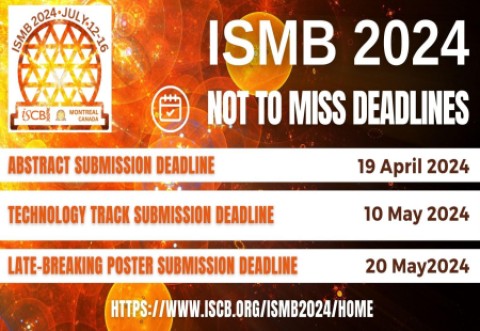
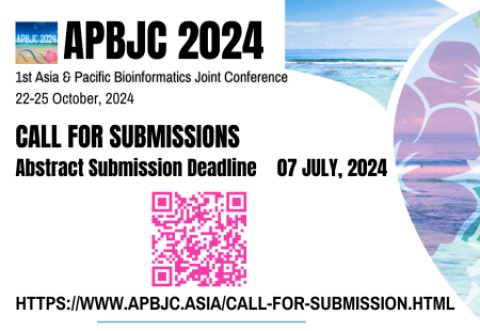
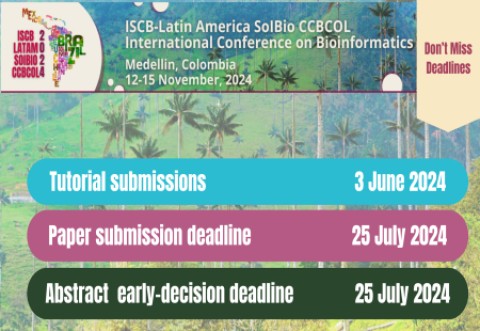
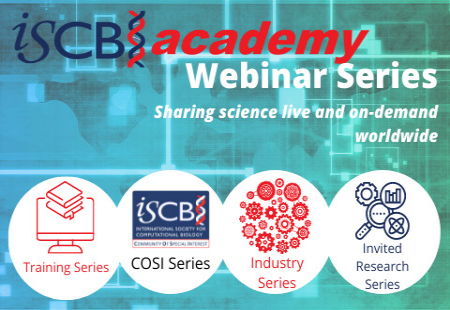
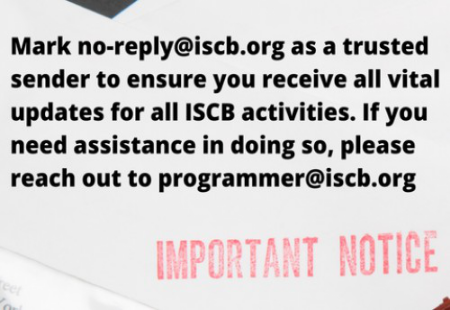
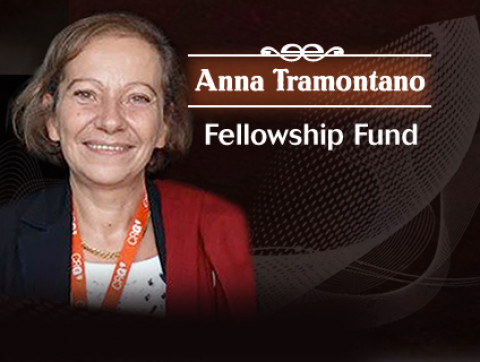


























 Friday, July 13
Friday, July 13




